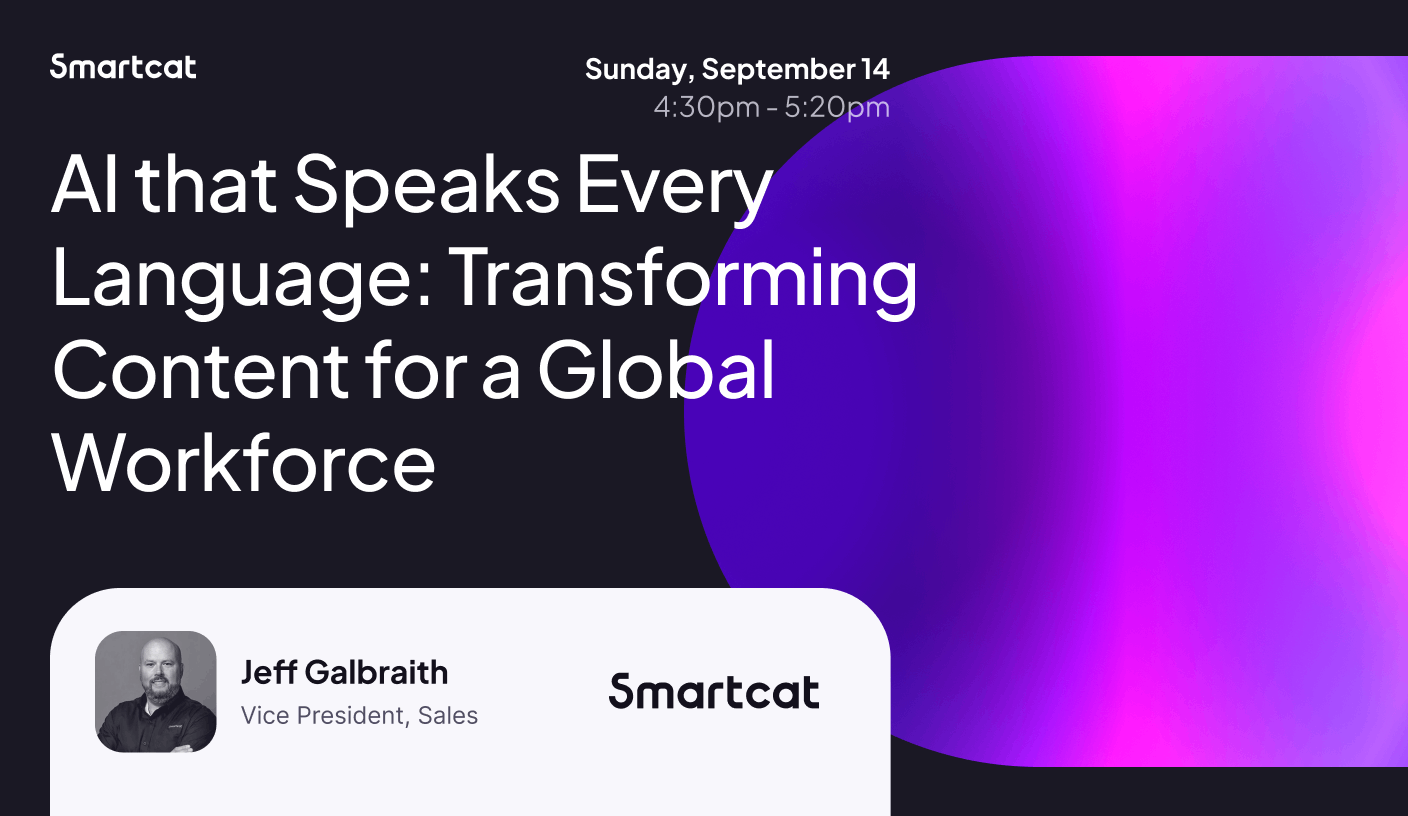Events
Smartcat Events
Explore the latest trends, topics and techniques in AI content creation and translation

Upcoming
Meet Smartcat at DevLearn 2025 in Las Vegas — Booth #322
Date
Type
Tags

The Do's and Don'ts of Using AI Agents for Localization in Global Campaigns
Meet Smartcat at MAICON 2025 in Cleveland - booth #31

From Prompt to Published: How AI Agents Can Automate Your L&D Life

Take Your Content Global: Working with AI Agents, Without the Rework

Create Once. Launch Everywhere. How AI Agents Eliminate Global Go-To-Market Lag
